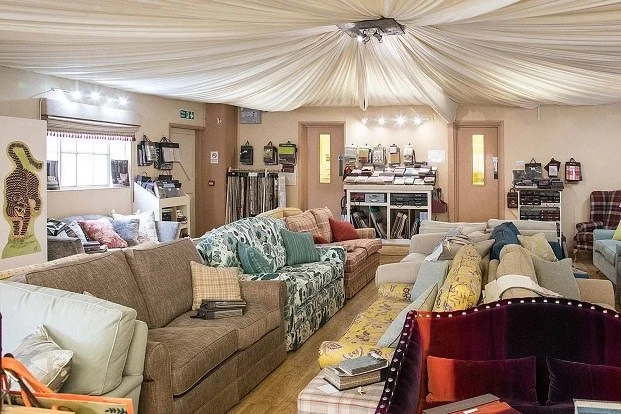Artisanal Charm Handmade Furniture Designs For Every Space

Handmade furniture embodies a level of craftsmanship and artistry that is unmatched by mass-produced alternatives. In today’s fast-paced world, where convenience often trumps quality, handmade furniture stands as a testament to tradition and dedication. This article explores the beauty and significance of handmade furniture, shedding light on its rich history, meticulous craftsmanship, and enduring appeal.
The History Of Handmade Furniture
Origins Of Handmade Furniture
Handmade furniture traces its origins back to ancient civilizations, where skilled artisans crafted functional yet beautifully adorned pieces using primitive tools and natural materials. These early creations served not only as household necessities but also as symbols of status and cultural identity.
Evolution Of Craftsmanship Techniques
Over the centuries, craftsmanship techniques evolved alongside advancements in technology and design. From the intricately carved furniture of the Renaissance era to the streamlined forms of the modern movement, each period contributed to the rich tapestry of handmade furniture history.
Notable Historical Periods And Styles
Distinctive styles emerged during different historical periods, influenced by cultural, social, and artistic movements. From the ornate Baroque furniture of the 17th century to the clean lines of mid-century modernism, each style reflects the prevailing aesthetics and values of its time.
The Making Of Handmade Furniture
Craftsmanship Process
The making of handmade furniture is a labor-intensive process that requires skill, patience, and attention to detail. It begins with careful selection of high-quality materials, followed by meticulous planning and execution of each step in the construction process.
Materials Used
Artisans often source materials locally, preferring sustainable options such as solid wood, reclaimed timber, or eco-friendly alternatives like bamboo and rattan. Each material is chosen for its unique characteristics and suitability for the intended design.
Tools And Techniques
Handmade furniture is crafted using a combination of traditional hand tools and modern equipment. From hand saws and chisels to power drills and sanders, artisans employ a range of tools to shape, join, and finish each piece with precision and finesse.
Benefits Of Handmade Furniture
Quality And Durability
Handmade furniture is renowned for its superior quality and durability. Unlike mass-produced pieces, which are often made from low-quality materials and constructed hastily, handmade furniture is built to last a lifetime with proper care.
Customization Options
One of the greatest advantages of handmade furniture is the ability to customize every aspect of the design to suit individual preferences and requirements. Whether it’s adjusting dimensions, choosing upholstery fabrics, or incorporating personalized details, artisans can create bespoke pieces that truly reflect the owner’s style and taste.
Sustainability and Environmental Impact
In an age where sustainability is increasingly important, handmade furniture offers a more eco-friendly alternative to mass production. By using responsibly sourced materials and minimizing waste through careful craftsmanship, artisans help reduce the environmental impact of furniture production.
Supporting Local Artisans And Communities
Purchasing handmade furniture not only supports individual artisans but also contributes to the preservation of traditional crafts and local economies. By investing in handmade pieces, consumers can help sustain a vibrant ecosystem of skilled craftsmen and women who take pride in their work and carry on centuries-old traditions.
Styles And Designs Of Handmade Furniture
Different Styles
Handmade furniture encompasses a wide range of styles, from rustic farmhouse to sleek contemporary designs. Each style is characterized by its distinct aesthetics, materials, and construction techniques, offering something for every taste and interior décor scheme.
Unique Designs And Features
What sets handmade furniture apart is the attention to detail and artistic flair that artisans bring to each piece. Whether it’s hand-carved embellishments, intricate joinery, or custom finishes, these unique touches add character and charm to handmade furniture, making it a cherished addition to any home.
Complementing Interior Aesthetics
Handmade furniture has the versatility to complement a variety of interior aesthetics, from cozy cottages to urban lofts. Whether you’re seeking a statement piece to anchor a room or subtle accents to enhance existing décor, handmade furniture offers endless possibilities for creating spaces that are both stylish and inviting.
Caring For Handmade Furniture
Maintaining Beauty
Proper maintenance is essential for preserving the beauty and integrity of handmade furniture. Regular dusting, polishing, and conditioning help protect wood surfaces and maintain their natural luster, while fabric upholstery should be vacuumed and spot-cleaned as needed to keep it looking fresh and vibrant.
Cleaning And Upkeep
Different materials require different cleaning methods, so it’s important to follow care instructions provided by the artisan or manufacturer. For wood furniture, avoid harsh chemicals and abrasive cleaners, opting instead for mild soap and water or specialized wood care products. Fabric upholstery should be treated with care to avoid damage from spills, stains, and excessive moisture.
Importance Of Regular Maintenance
By investing time and effort into regular maintenance, you can extend the life of your handmade furniture and keep it looking like new for years to come. In addition to routine cleaning, occasional inspections for signs of wear and tear, such as loose joints or scratches, can help address minor issues before they escalate into major problems.
Where To Find Handmade Furniture
Local Artisan Workshops And Galleries
Many artisans sell their Handmade Furniture directly to customers through local workshops, galleries, and artisan markets. Visiting these venues not only allows you to see the craftsmanship up close but also provides an opportunity to meet the artisans behind the pieces and learn more about their techniques and inspiration.
Online Platforms And Marketplaces
For those unable to visit in person, online platforms and marketplaces offer a convenient way to browse and purchase handmade furniture from artisans around the world. Websites specializing in handmade goods often feature a curated selection of unique and one-of-a-kind pieces, making it easy to find something that suits your style and budget.
Custom Furniture Designers And Craftsmen
For truly bespoke creations, working with custom furniture designers and craftsmen allows you to collaborate on a design that is tailored to your specific needs and preferences. Whether you have a clear vision in mind or need guidance in developing a concept, experienced artisans can bring your ideas to life with skill and craftsmanship.
Conclusion:
Handmade furniture is more than just a piece of décor; it’s a testament to the timeless artistry of skilled craftsmen and women who dedicate their lives to preserving traditional techniques and creating objects of beauty and utility. Whether you’re drawn to the rich history and heritage of handmade furniture or simply appreciate the quality and craftsmanship it represents, investing in handmade pieces brings a sense of warmth, character, and authenticity to your home. As you explore the world of handmade furniture, remember to cherish each piece not only for its aesthetic appeal but also for the stories and craftsmanship woven into its very fabric.








